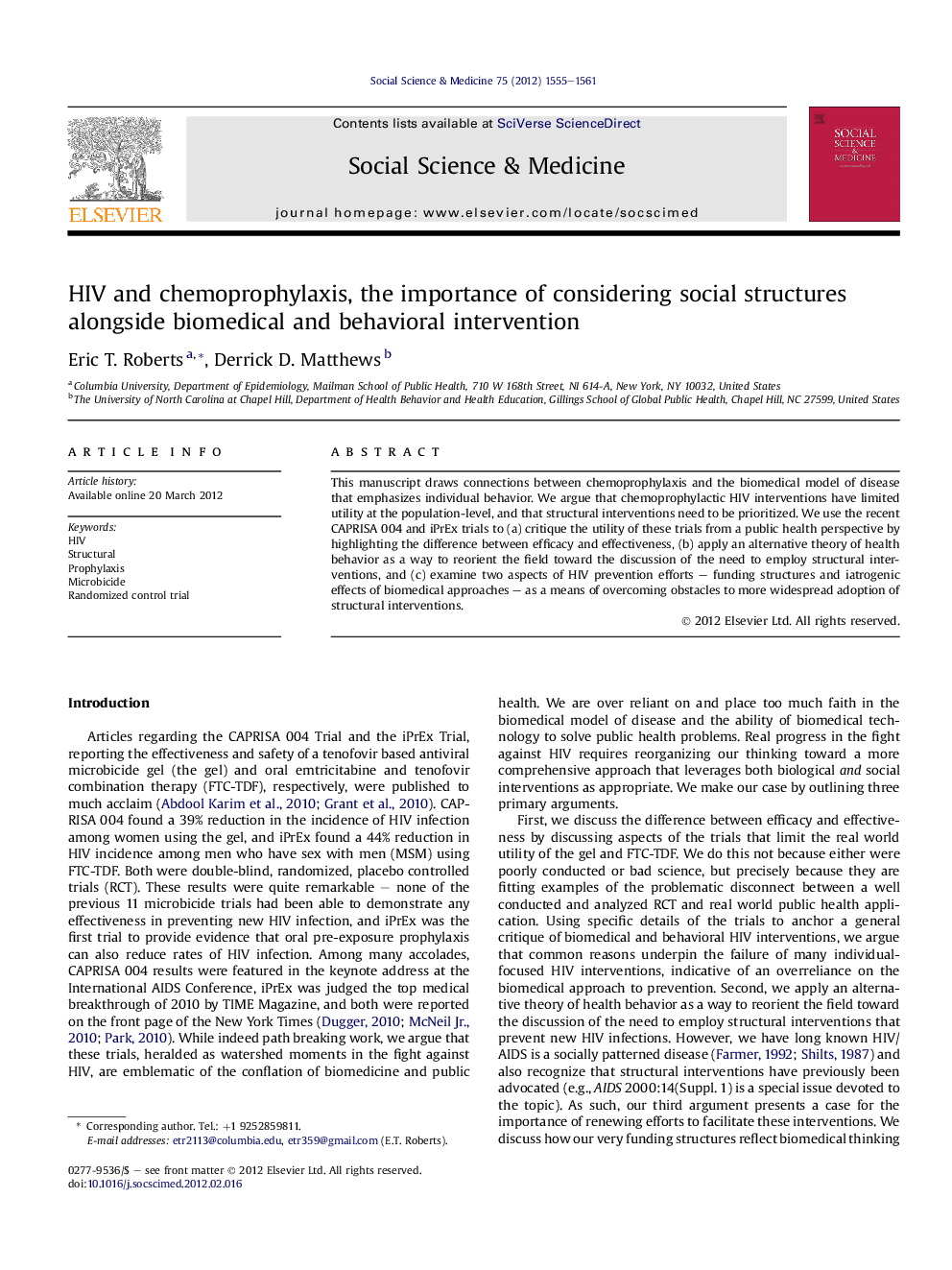| Article ID | Journal | Published Year | Pages | File Type |
|---|---|---|---|---|
| 952436 | Social Science & Medicine | 2012 | 7 Pages |
This manuscript draws connections between chemoprophylaxis and the biomedical model of disease that emphasizes individual behavior. We argue that chemoprophylactic HIV interventions have limited utility at the population-level, and that structural interventions need to be prioritized. We use the recent CAPRISA 004 and iPrEx trials to (a) critique the utility of these trials from a public health perspective by highlighting the difference between efficacy and effectiveness, (b) apply an alternative theory of health behavior as a way to reorient the field toward the discussion of the need to employ structural interventions, and (c) examine two aspects of HIV prevention efforts – funding structures and iatrogenic effects of biomedical approaches – as a means of overcoming obstacles to more widespread adoption of structural interventions.
► CAPRISA 004 and iPrEx are efficacy trials; these interventions will have limited effectiveness in populations. ► Human behavior is the product of autonomy and structural constraints; this highlights the primacy of structural change. ► Individually focused interventions, whether behavioral or biomedical, will have limited utility without structural change. ► Our funding structures reflect biomedical thinking; there is little room to develop or evaluate structural interventions. ► Utilizing individually focused interventions can increase stigma within communities.
